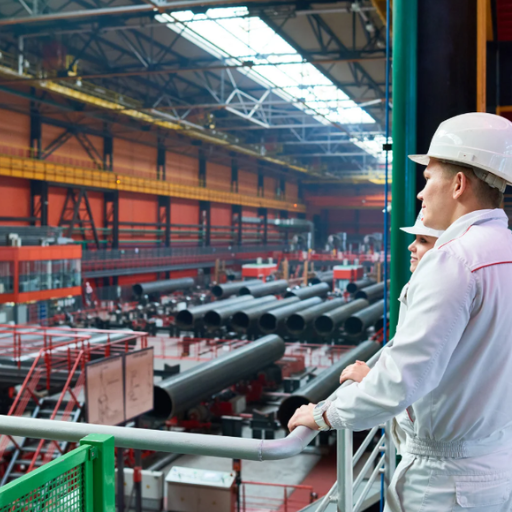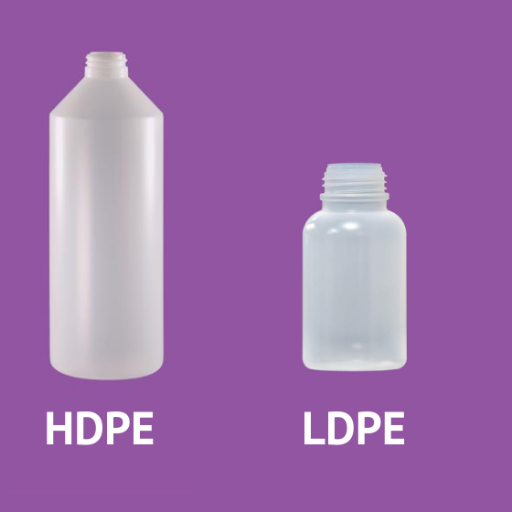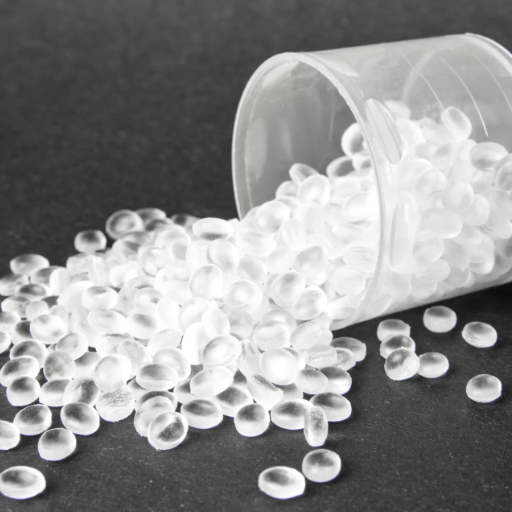Knowing how HDPE (High-Density Polyethylene) pellets are produced sheds light on one of the most valuable and deeply integrated plastics of our time. From packaging consumables to construction elements, HDPE is essential in the manufacture of long-lasting and environmentally friendly goods. But what goes into converting the raw materials into small and uniform pellets that are the building blocks of countless applications? In this article, we bring you the panoramic view of the HDPE manufacturing process, considering methods, technologies, quality assurance, and other control measures that are aimed at achieving reliable, repeatable results. If you are interested in the world of plastics, or if you are searching for suppliers of stringent materials, then this document is meant to expose you to carefully engineered HDPE along with other distinctly designed features of such standards to satisfy customers demanding expectations.
What is the Manufacturing Process of HDPE Pellets?

There are several critical steps in how HDPE pellets are manufactured. To begin, ethylene, which comes from sources such as natural gas and crude oil, is polymerized into high-density polyethylene (HDPE). A controlled setting with a catalyst is usually used to perform this polymerization. The HDPE is then melted to form strands, which are extruded through a die. These strands are subsequently cooled and cut into pellets of uniform size, which are packaged for distribution. Such processes guarantee that the pellets can be utilized in different applications, and of a certain quality.
Understanding the Raw Material for HDPE
Polyethylene products, such as supermarket bags and containers, are made of HDPE, which is one of the most popular types of plastics. With an impressive strength-to-density ratio, HDPE is rigid and durable compared to polyethylene’s other variants. Additionally, its impact resistance, coupled with low density, allows it to be physically lightweight. HDPE’s broad range of uses, such as piping systems and storage containers, makes it a vital industrial material.
Most plastics with hydrocarbon skeleton chains, such as HDPE, are known for their strength. They are also prone to deforming upon melting due to its extremely high temperatures, polyethylenes melting point varies from 120-180°C. This feature enables its industrial application as well as packaging for harsh environments. HDPE is also chemically inert, durable against acids, bases and hydrocarbons making it ideal for industrial packaging.
Being an eco-friendly material, HDPE is easily recyclable which significantly lowers the associated energy needed for production. According to current projections, HDPE’s plastic waste is steadily on the rise due to the needed infrastructure. Recent estimates show above 30% in certain areas of the world which makes it ideal compared to alternatives being lesser plastic bolstered Ekonomiks.
Extrusion Process in Producing HDPE Pellets
The extrusion step confirms quality for industrial applications in the manufacturing of high-density polyethylene (HDPE) pellets. During this step, a specific amount of HDPE resin is heated to melt and then extruded through a die to produce a predefined shape. This shape is then cooled and sliced into pellets. The HDPE extrusion flow rheometer maintains temperature within a range of 200°C to 250°C, closely monitored so that the polymer does not break down.
Importance is given to modern methods of extrusion like twin-screw extruders which can give an ultra-fine control over the shaping parameters like the pressure, temperature, and rotating speed of the screw. These parameters, in turn, can control the speed and direction of additive injection, used to improve properties such as UV exposure, impact strength, or chemical attacks. The insights from recent studies indicate that enhanced operational parameters based on the extrusion processes reached an efficiency increase of production by 15%, with an additional 20% on energy savings.
To manufacture high quality pellets, particular systems are used for cooling that quickly solidify the liquid material while keeping its molecular structure intact. Also, stringent in-line control systems like melt-flow indexing and density measurement are integrated in the process to check for inconsistencies on the spot. In extrusion, best practices are followed so that the HDPE pellets guarantee the required quality and exacting standards set by the customers and the industry.
What Are the Properties and Applications of HDPE?

High-density polyethylene (HDPE) is known for its wide range of uses, including in packaging and storage containers. This is mainly due to its impressive strength-to-density ratio, impact resistance, and its chemically stable nature. HDPE is also light, non-toxic, and resistant to moisture.
Properties of HDPE:
- It is very strong and long-lasting
- Resists chemicals, moisture, and corrosion
- It is light, non-toxic, and safe
- Is resistant to impact
Applications of HDPE:
- Used for packaging materials, including bottles and containers
- Used to manufacture pipes and parts for transporting water and gas
- Used in construction products, including geomembranes and plastic lumber
-
Used in consumer products such as toys and reusable household items
Due to these properties and uses, HDPE is a critical industrial commodity.
Durability and Chemical Resistance of HDPE
High-Density Polyethylene (HDPE) is widely known to be a tough polymer that is highly durable, able to withstand chemicals,a nd has a myriad of applications. Due to its molecular structure, HDPE products possess a high tensile strength, which enables them to endure significant mechanical stress without cracking or breaking. For instance, HDPE pipes are estimated to last over 50 years while enduring normal operating conditions, including harsh surrounding conditions.
Another characteristic feature of HDPE is its chemical resistance, which performs outstandingly against many substances such as acids, alkalis, and even organic solvents. This makes the chemical industry one of the main users of HDPE because of its aggressive chemicals. Also, HDPE materials resist most cleaning agents which makes them useful in the medical and food processing industries.
Studies suggest that HDPE can retain its form and structure under temperatures of -40°F to 176°F while also ensuring strength under high and low temperatures. The chemical stability alongside the range of infrastructure development applications makes HDPE reliable.
Wide Range of Applications for HDPE Products
The significance of HDPE (High-Density Polyethylene) has emerged in recent times owing to its exceptional durability, chemical, and heat resistance. Below is a detailed list of applications where HDPE is of fundamental importance:
- Packaging Industry
-
-
- Pipes for drainage, water supply, gas distribution, and sewage systems all make extensive use of HDPE pipes.
- Around 30% of the total HDPE produced globally is utilized in the packaging domain.
-
- Construction and Infrastructure
-
-
- Pipes for drainage, water supply, gas distribution, and sewage systems all make extensive use of HDPE pipes.
- With their corrosion and environmental stress cracking resistance, these pipes are estimated to have a life span of over 50 years.
- For construction, HDPE sheets are used for damp-proof membranes and barrier layers.
-
- Automotive Industry
-
-
- In the automotive industry, fuel tanks, fluid containers, and some other protective parts of cars are customarily made of HDPE.
-
Increased gas mileage for vehicles is a result of HDPE’s lightweight properties.
-
- Agriculture
-
-
- HDPE is used for the manufacturing of irrigation pipes as well as storage tanks and plastic film crop protectors.
- Farming applications soar because of their resistance to harsh environmental factors.
-
- Healthcare and Medical Applications
-
-
- HDPE’s cleanliness characteristics make it suitable for medical containers, tubing, and some other equipment.
- Unfavorable interaction with medical substances or solutions is ensured by the chemical HDPE’s protective strength.
-
- Consumer Goods
-
-
- HDPE is utilized in manufacturing playground equipment as well as various storage containers and cutting boards.
- Most people in surveys claim that HDPE is one of the most widely used plastics in their homes due to its safety and strength.
-
- Energy Sector
-
-
- The transportation of oil and gas cannot be done without HDPE pipes.
-
Able to withstand high pressure and extreme weather conditions, the flexible and tough HDPE parts are very effective.
-
These highlights showcase the wide variety of uses HDPE is put to, as well as areas of modern industry which rely on its value. Its versatility guarantees its status as a preferred material for countless uses.
Why Choose Virgin HDPE Over Recycled Options?
Virgin HDPE is stronger than recycled HDPE because it is manufactured from pure resin. One of its benefits is the structural strength of the material ,which is useful in construction for pressure piping and infrastructure components. Research has shown that virgin HDPE is capable of higher withstand pressure rating,s which makes it reliable under extreme conditions.
In addition, virgin HDPE does not have dirt or recycled material impurities, which makes its quality consistent. This is important for sectors like medicine, where infections can never be tolerated. Data shows that virgin systems are more chemically resistant, which makes them perfect for medical grade storage containers and used in chemical containment systems.
Though sustainability is a benefit associated with recycled HDPE, the advantage of VHDPE is that it is more easily reused without losing product quality. It’s advantageous in environments which require strong, long-lasting materials because of its longevity and ability to withstand repeated stress.
How Do HDPE Pellets Compare to Other Plastic Pellets?

HDPE pellets stand out from other plastic pellets due to their excellent strength-to-density ratio, higher chemical resistance, and durability. Compared to alternatives like polypropylene or PVC, HDPE is lighter yet more robust, making it ideal for packaging, construction, and industrial applications. Additionally, HDPE pellets are highly versatile and recyclable, offering a sustainable option without sacrificing performance. Their ability to withstand harsh conditions, such as extreme temperatures and stress, sets them apart in demanding environments.
Differences Between HDPE and Polypropylene Pellets
Both HDPE (high-density polyethylene) and polypropylene are popular types of thermoplastics; however, they vary greatly in characteristics, uses, and performance. The properties of HDPE pellets are more rigid than those of polyethylene, thus, possessing a greater tensile strength and durability. This is why HDPE is a preferred option for more strenuous tasks like industrial piping, heavy-duty containers, and industrial-grade components. Polypropylene, in contrast, has a lower density, which means that it is more flexible and softer compared to HDPE. This makes it better suited for lightweight applications such as food packaging, textiles, and automotive interiors.
One of the most differentiating factors between HDPE and polypropylene is temperature resistance. HDPE can withstand lower temperatures better than polypropylene; it does not become brittle in freezing temperatures. Polypropylene, however, performs better in hot environments and has the upper hand as its melting point is around 130-171 °C, compared to HDPE’s 120-130 °C range. This gives grease polypropylene an advantage when it comes to tasks that involve the need for sterilization or heating, like medical equipment and other microwaveable items.
From the standpoint of chemical resistance, both plastics are thermally stable and resistant to many acids, alkalis, and other chemicals. Polypropylene is better suited for applications requiring repeated bending, such as plastic hinges, as it outperforms HDPE in resistance to fatigue.
Both materials can be recycled, but HDPE seems to have an advantage with its post-consumer recycling rates, especially with milk jugs and detergent bottles. More recent information shows that HDPE is recycled at rates about 30-35% greater than polypropylene in several areas, which may influence decisions in circular economy-focused industries.
In the end, deciding whether to use HDPE or polypropylene pellets depends on the strength, flexibility, temperature resistance, and sustainability needs of the application. Knowing their specific properties helps in choosing the right material for any given project.
Versatility of High-Density Polyethylene
High-Density Polyethylene (HDPE) is one of the most versatile and widely used polymers because of its multitude of useful traits. It is impact resistant, which makes it useful in applications such as piping, industrial containers, and protective barriers. Another remarkable trait of HDPE is its chemical resistance, allowing it to withstand acidic and alkaline environments.
In addition, HDPE provides exceptional performance in tensile strength supporting structures as it can reach values of 4,000 psi. In terms of sustainability, HDPE is 100% recyclable and is used to manufacture eco-friendly products like reusable containers, plastic lumber, or geomembranes. Also, its lightweight makes transportation cheaper while its structural integrity is preserved. With all these reasons, HDPE is used in construction, packaging, automotive, farming, and many other industries.
Applications of Low-Density vs. High-Density Polyethylene
Low-Density Polyethylene (LDPE)
- Plastic Bags and Film Wrapping
LDPE is used in products such as grocery bags, sandwich wraps, and shrink films due to its flexibility, low cost, and pliability.
- Containers
It is lightweight and squeezable, making it perfect for food-grade containers. Its semi-transparency and chemical resistance is an added bonus.
- Cable and Wire Insulation
Due to LDPE’s insulating properties, it is perfect for electrical uses such as covering wires and cables.
- Manufacturing of Laminates
LDPE is used in the lamination process of packaging to make the product more durable and moisture resistant.
High Density Polyethylene (HDPE)
- Pipes and Fittings
Water distribution systems, gas pipelines, and sewerage systems use thermoplastic high-density polyethylene (HDPE) plastic for huge infrastructural components such as pipes. This is as a result of its strength and corrosion resistance.
- Storage Containers
Makes rigid containers like milk jugs and detergent bottles, or even chemical storage tanks because of the plastic’s high stiffness to density ratio .
- Automotive Components
The automotive industry greatly benefits from HDPE’s toughness and low weight in the production of fuel tanks and various interior components.
- Recycled Plastic Products
Environmental efforts are aided by the recycling of conventional plastic items like park benches, outdoor furniture, and plastic lumber, which are processed from HDPE.
- Geomembranes and Industrial Linings
Closed cell foams LDPE and HDPE are used in permeable and semi-permeable membrane geotechnical applications for use as protective barriers in landfill liners, pond covers, and various mining functions.
See these two noteworthy plastics serve distinct purposes, yet both fundamentally enable innovation in contemporary industrial technology and sustainable development.
What Industries Use HDPE Pellets?

Some of the sectors that use HDPE pellets are:
- Packaging Industry
HDPE polymer pellets are remarkably useful. They can be employed in the creation of bottles, containers, and even plastic bags owing to its exceptional strength and durability.
- Construction Industry
These pellets can be used to manufacture pipes, geomembranes, and other infrastructure building elements.
- Automotive Industry
For the automobile industry, HDPE is utilized in the production of fuel tanks, internal parts like seat backs, and various other chamber components.
- Agriculture Industry
Used for manufacturing pipes for irrigation, as well as other farming equipment that needs to be durable.
- Consumer Goods Industry
It has its application for household purposes as they are made into storage boxes, toys, and other reusable containers.
They achieve the required resilience, adaptability, and environmentally friendly considerations that modern industries seek, thus becoming critical in contemporary manufacturing processes.
Automotive Industry Applications of HDPE
The automotive sector relies profoundly on High-Density Polyethylene (HDPE) because of its lightweight, impact, and chemical-resistant properties. In addition, its impressive strength-to-weight ratio makes it a favorite. It is extensively utilized in the production of fuel tanks because it’s able to withstand pressure and stop fuel permeation. HDPE fuel tanks also meet strict safety and environmental regulations. It has been demonstrated that HDPE fuel tanks lower the overall weight of vehicles, which leads to reduced fuel consumption and greenhouse gas emissions.
Also, HDPE is widely used for seat backs and headrests since it is tough, shock-absorbing, and enhances passenger safety. Research shows that using lightweight materials like HDPE trims 10% off vehicle weight and provides 6-8% more fuel efficiency. Door panels, consoles, and dashboards also have large sections made out of HDPE to provide reliable, long-lasting, and visually pleasing components. In addition, these components can be easily recycled, which supports the eco-friendly initiatives of the automotive industry, thus making it an indispensable material for the design and manufacturing of modern vehicles.
HDPE in Pipe Manufacturing
The versatility, cost effectiveness, and long-lasting durability of High-Density Polyethylene (HDPE) has transformed the pipe manufacturing industry. Withstands harsh conditions such as water distribution systems, sewage lines, natural gas pipes, and more. One of the most prominent advantages of HDPE pipes is that they are reliably resistant to corrosion and chemical damage.
The HDPE pipes withstand high pressure and impact loads because of their flexible nature, which greatly contributes to infrastructure durability. During installation, fusion welding methods create leak-proof joints, which result in reduced water loss. Reports indicate that the lifespan of HDPE pipes exceeds 50 years. With mere maintenance, infrastructure costs are greatly reduced. In addition, the low friction on the inner surface of the HDPE pipes enhances the flow rate and reduces the amount of energy used while transporting water and gas. These factors make it obvious why HDPE is greatly preferred in pipe manufacturing. Rather, strongly contributes to the innovation of the sustainable piping systems throughout the world.
Plastic Parts and Containers Made from HDPE
The versatility of HDPE makes it one of the most popular plastics utilized for the manufacture of various industrial parts and containers. Its strength-to-density ratio is one of the highest in the industry which provides durability while ensuring the structure stays lightweight, critical for transportation and storage. For example, HDPE containers are widely used in the food handling and storage sector because they comply with stringent safety standards and resist moisture, chemicals, and extreme temperatures.
Recent studies suggest that the global market for HDPE containers is currently on an upsurge, expected to exceed $70 billion by 2030. This is attributed to the growing demand from the packaging, healthcare, and construction industries. Moreover, the ease with which HDPE can be recycled has made it more widely accepted as an environmentally friendly packaging material by an increasing number of companies.
Apart from other plastics, HDPE is also applicable in the automotive and industrial sectors like in the production of fuel tanks, chemical containers, and other devices that need to withstand harsh chemicals, due to their superior durability. With a life span of up to a few decades, HDPE products are champions of innovation and sustainability in the manufacturing industry.
What Are the Advantages of Using HDPE in Manufacturing?

- Durability: HDPE is perfect for long-lasting products because it is impact resistant, weather resistant, and resistant to chemicals.
- Lightweight: It’s strengthened by low density, which reduces the overall weight of the product.
- Recyclability: HDPE can be readily recycled, which aids in eco-friendly HDPE manufacturing.
- Cost-Effectiveness: The material is inexpensive but provides valuable performance features.
- Versatility: HDPE can be molded into different shapes and sizes, which fulfills various manufacturing demands.
High Strength-to-Density Ratio of HDPE
HDPE is widely used in many industries because it has high strength and a low density simultaneously. It has a density of 0.93 to 0.97 g/cm3 which provides notable strength and stiffness while remaining light. This benefit is due to its highly crystalline structure, which correlates with increased durability and resistance to warping when stress is applied.
As per the industrial statistics, depending on certain manufacturing processes and the specific types of polymers, HDPE is accepted to be capable of bearing tensile strengths between 20 to 37 MPa. This makes it appropriate for demanding uses like pipes, containers, and geomembranes, where using light materials while having high strength is critical. In addition, its resistance to cracking and impact makes it more reliable for harsh temperatures and chemicals.
Recyclability of HDPE Material
Often considered one of the more easily reused plastics, High Density Polyethylene (HDPE) is categorized as number 2 plastic on the recycling scale. Because HDPE is a thermoplastic material, it can be melted and reformed multiple times without greatly compromising its structural integrity. As a result, HDPE can withstand many iterations of recycling. Some of the most important benefits of HDPE recycling are that the plastic can be repurposed into diverse products, including pipes, plastic bottles, and even plastic lumber.
Recent research has brought to light that an estimated 30% of the plastic HDPE materials produced in the world are recycled. In the USA, there is around 28% recovery rate of HDPE bottles for recycling, which is comparatively better than the majority of plastic materials. The recycling procedure starts with cleaning the plastic, then shredding it, and finally re-melting it into fresh NEW HDPE pellets, which can be further used to manufacture new products. There is also improvement in recycling technologies, which include chemical recycling, which is greatly enhancing the efficiency of repurposing HDPE. These measures are immensely important towards tackling the challenges posed by plastic waste and fostering sustainable circular economies.
Specific Requirements for Different Applications
With regard to different applications, I pay attention to the grade characteristics of HDPE, so I can pinpoint the exact one I require. For example, industrial containers require high impact resistance, whereas packaging in the food industry mandates non-toxicity and food safety. Furthermore, particular applications may need UV resistance or flexibility and I address these requirements by selecting the right HDPE variant or additive solutions. This meticulous selection helps achieve essential functional and safety standards.
How Is Quality Ensured in HDPE Pellet Manufacturing?

Precise testing and monitoring at each stage of production guarantee quality when manufacturing HDPE pellets. Quality starts with the sourcing of the raw materials. During manufacturing, uniformity is achieved by closely controlling temperature, pressure, and other essential parameters. The final pellets undergo testing for critical attributes, which include density, melt flow rate, and impact resistance. All these checks guarantee that the pellets will perform as needed for their intended applications.
Standards for Producing High-Quality HDPE
High-quality HDPE is achieved only by following specific, stringent processes related to accuracy, safety, consistency, and processing. Also, aligning with regulatory frameworks like FDA guidelines in the US or EFSA guidelines in Europe ensures the controlled production of food-grade HDPE to make certain that no harmful substances are present for safe direct food contact.
Purity and quality of the resin used is important during the production of HDPE since it affect durability, flexibility, and resistance to chemicals and UV light. Precise quality assurance methods, such as measuring the melt flow index or viscosity control, along with density measurements, are used to check the material properties in the course of the work. For instance, the density of HDPE is between 0.93 to 0.97 g/cm³, which means strength and flexibility are well balanced.
Other than that, some manufacturers do the usual source of recycling HDPE waste and post-consumer resins to their production line, which is a good ergonomic step. This also meets the ever-increasing market need for environmentally friendly materials. By combining these precise phenomena with new sophisticated technologies, manufacturers are capable of producing HDPE exceeding the requirements set forth by the construction, packaging, and automotive industries.
Testing for Chemical Resistance in HDPE Products
High-density polyethylene (HDPE) boasts of one of the best chemical resistance records. Because of this, it is widely used in industries which deal with harsh chemicals. Its ability to withstand stress from different chemical sources like acids and bases, even solvents, undergoes rigorous testing.
To illustrate, research suggests that hydrochloric acid does not cause any reaction with HDPE even at 37% concentration and with sulfuric acid up to 70% concentration. This means HDPE is perfect for chemical storage sinks. In addition, HDPE does not undergo any degradation when in contact with sodium hydroxide and other aseptic substances. However, oxidizing chemicals like concentrated nitric acid do tend to cause a reaction over time.
In order to test for chemical resistance, various standard procedures, ASTM D543, are performed. These procedures test samples for chemical solutions. HDPE is claimed to be chemically stable. For chemically aggressive conditions, HDPE samples undergo calculation measuring weight, volume, and visual change, and are subjected to 23 degrees Celsius in 10% acetic acid to be performed over 30 days. For chemically aggressive conditions, HDPE is expected to withstand over 0.03% weight loss and claim resistance capability from the solution.
The data illustrates the importance of HDPE in chemical-intensive uses like pipelines, container, and industrial linings, where long term structural integrity is essential. As before, manufacturers continue to depend on rigorous testing to ensure HDPE products dos meet the required resistance profiles adequated for different industries.
Reference Sources
- Pelletizing Ultra-High Molecular Weight Polyethylene (UHMWPE) with HDPE2:
- Key Findings: A novel tapered die with air cooling was developed to pelletize UHMWPE and its blend with 5% HDPE. This method improved tensile strength by 40% due to enhanced molecular diffusion and reduced oxidation. The process also showed negligible chain scission and better fusion between UHMWPE and HDPE.
- Methodology: The study used a twin-screw extruder with a tapered die for compression molding. Techniques like Fourier Transform Infrared Spectroscopy (FTIR) and intrinsic viscosity measurements were employed to analyze molecular changes and mechanical properties.
- HDPE-Graphite Composite for Thermal Energy Storage3:
- Key Findings: This research introduced a continuous extrusion process to fabricate HDPE-based graphite composite phase change materials (PCMs). The process enhanced thermal diffusivity by 70% and established a clear link between extrusion parameters and PCM properties.
- Methodology: A single-screw extruder was used to manufacture the composite. The study employed differential scanning calorimetry and thermal gravimetric analysis to evaluate the thermophysical properties of the composites.
- Plastic Recycling in Indonesia4:
- Key Findings: This study focused on recycling HDPE and other plastics into pellets to reduce environmental impact. The mechanical recycling process was highlighted as effective for producing high-quality pellets suitable for various applications, excluding food-grade products.
- Methodology: The process involved sorting, washing, shredding, and extrusion. The study emphasized the importance of maintaining optimal melting temperatures and cleanliness during recycling.
- Top HDPE Plastic Pellets Suppliers in China
Frequently Asked Questions (FAQs)
Q: What is the basic process of manufacturing HDPE pellets?
A: The manufacturing of HDPE pellets involves the polymerization process, where ethylene, derived from petroleum, is transformed into a thermoplastic polymer. This process creates molten HDPE, which is then cooled and formed into granules or resin pellets.
Q: How are HDPE granules produced from polyethylene resin?
A: HDPE granules are produced by cooling and solidifying molten HDPE after the polymerization process. Once cooled, the solidified material is chopped into small granules or pellets that are suitable for plastic manufacturing.
Q: What are some applications of HDPE containers made from resin pellets?
A: HDPE containers are widely used in packaging due to their durability and barrier properties. They are ideal for holding everything from household chemicals to food products, benefiting from the versatility of HDPE.
Q: What is the significance of choosing HDPE for manufacturing products?
A: Choosing HDPE is significant because it offers excellent chemical properties, electrical insulation properties, and resistance to impact. These characteristics make it a preferred material in various applications, especially in plastic packaging.
Q: What temperatures are involved in the manufacturing of HDPE?
A: The manufacturing of HDPE involves high temperatures during the melting process, where pellets are melted to form a liquid state that can be molded into different shapes and products.
Q: Can HDPE granules be recycled, and how does this process work?
A: Yes, HDPE granules can be recycled. The recycling process involves collecting used HDPE products, cleaning them, and then reprocessing the material into new resin pellets. This helps in the conservation of resources and reduces plastic waste.
Q: What are the advantages of using virgin plastic production for HDPE?
A: Virgin plastic production for HDPE ensures that the material is free from contaminants and maintains the original properties of polyethylene resin. This results in higher quality products with better performance for applications in packaging and other industries.
Q: How do the chemical properties of HDPE affect its usage in manufacturing?
A: The chemical properties of HDPE, such as its resistance to acids and bases, make it suitable for a wide range of applications. This includes its use in manufacturing containers for chemicals, as well as in various construction products.
Q: What is the role of blow molding in the production of HDPE products?
A: Blow molding is a manufacturing process that uses resin pellets to create hollow plastic products. In this process, melted HDPE is blown into a mold to form items like bottles and containers, leveraging the versatility of HDPE.

